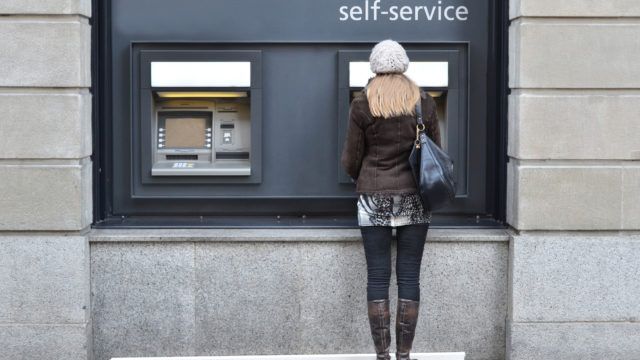Whilst contactless payment may still feel like a relatively new phenomenon, the first card to offer this capability – Barclaycard’s OnePulse, which combined a credit card with the Oyster card used on London transport systems – celebrates the tenth anniversary of its launch later this year. Making a contactless payment for small purchases now feels as natural as reaching for the change in your pocket, and the technological advances that allow these payments to be made using your smartphone mean that the ways people are paying for everyday goods and services are continuing to change and evolve.
As such, the use of coins and notes when paying is becoming increasingly less common, especially amongst the younger generation. Whilst there’s no suggestion of physical currency disappearing any time soon, this does raise questions over the future of the automated teller machine (ATM), often known simply as a cash machine or ‘hole in the wall’.
Whilst some see the decline and eventual disappearance of ATMs from UK high streets as an inevitability as digital technology becomes more and more prevalent in our financial lives, one possible alternative is a ‘bank in a box’: a machine available 24/7 which provides all the services traditionally found in the local branch of your bank. These next-gen ATMs function more like tablet devices, allowing you to access all of your banking services through touchscreen technology.
Banks in the US are also embracing rather than fighting the rise of smartphone banking through advanced ATMs which allow customers to use their phones to interact with cash machines. Drive-through banks allow you to begin a transaction on your smartphone and complete it on an ATM, a functionality which is likely to arrive in the UK and elsewhere throughout the world in the not-too-distant future.
The popularity of Metro Bank, celebrating both its seventh birthday and the opening of its one millionth account this year, attests to the ‘banking revolution’ which is seeing a move away from traditional bank practices. The relatively young bank is a hit with millennials for more than just the free lollipops and dog biscuits it’s become known for.
Metro can provide replacement cards and cheque books for customers in store straight away, rather than in a few days time through the post, as well as offering banking services on a Sunday in many of its branches. It may seem obvious, but it’s 21st Century thinking like this that the majority of customers will undoubtedly be looking for – and indeed expecting – from their bank in the not-too-distant future.

Comments on What will the ‘hole in the wall’ of the future look like?
There are 0 comments on What will the ‘hole in the wall’ of the future look like?